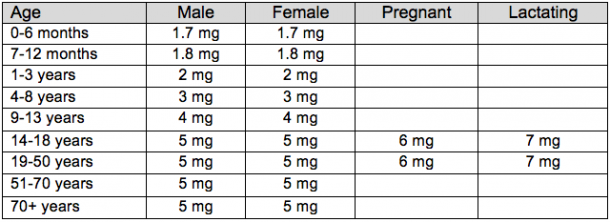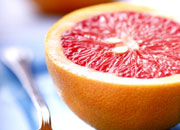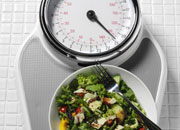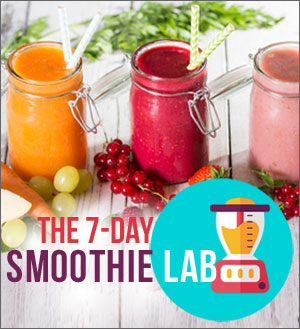 Vitamin B5, or pantothenic acid, plays a critically important role in numerous metabolic processes.
Vitamin B5, or pantothenic acid, plays a critically important role in numerous metabolic processes.
These reactions control synthesis of fat, hormones, cholesterol, neurotransmitters and hemoglobin. B5 is a cofactor for energy metabolism and gene expression.
Recommended Dietary Allowances for Vitamin B5
 Source: Food and Nutrition Board, Institute of Medicine, National Academies
Source: Food and Nutrition Board, Institute of Medicine, National Academies
Which Foods Have Vitamin B5?
Mushrooms
Duck
Sunflower seeds
Salmon
Rice, enriched
Trout
Yogurt
Corn
Lobster
Peas, sugar snap
Crab
Sweet potatoes
Pork
Turkey
Chicken liver
Lentils
Potatoes
Split peas
Avocado
Dates
Broccoli
Soy milk
Milk
Eggs
Chicken
Lima beans
Chestnuts, roasted
Haddock
Whole wheat flour
Garbanzo beans
Cucumber
Cauliflower
Halibut
Watermelon
Bulgur
Couscous
Most ready-to-eat cereals are fortified with B5 (pantothenic acid) in varying amounts.
What Happens If You Don’t Get Enough Vitamin B5?
Because vitamin B5 is so widespread in food, deficiency symptoms have only been seen in cases of starvation or unusual medical conditions that induce deficiency.
Experimental deficiency caused symptoms like headache, digestive and sleep disturbances, fatigue and tingling in extremities. All of these symptoms can be caused by other medical conditions or nutritional deficiencies.
Average daily intake is believed to be close to the Adequate Intake level. In addition, there is evidence that bacteria in the colon can synthesize pantothenic acid, but it’s not clear whether humans can absorb B5 from the colon.


 Are you ready to look better, feel more energized, and get back that youthful feeling you remember having as a kid? I can help you on a journey that will change the way you eat — for good. My
Are you ready to look better, feel more energized, and get back that youthful feeling you remember having as a kid? I can help you on a journey that will change the way you eat — for good. My 














 As a healthy cooking expert, health coach and TV host,
As a healthy cooking expert, health coach and TV host, 



Speak Your Mind